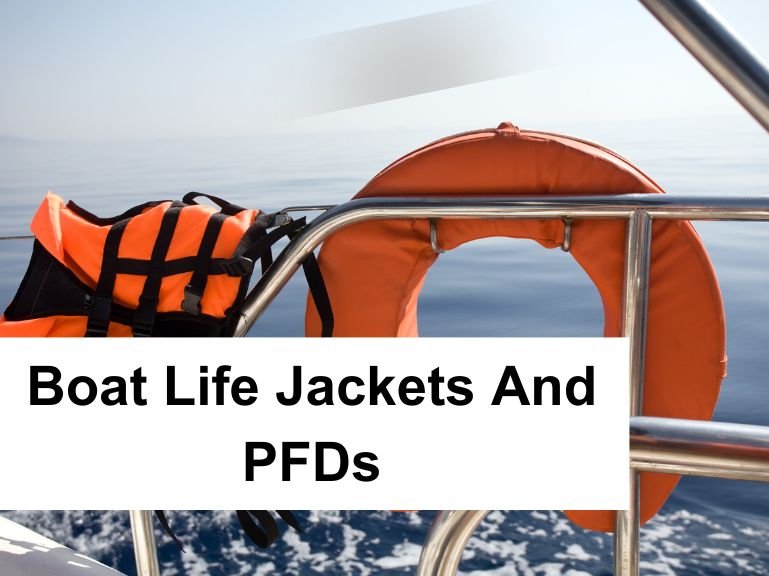Why Boat Life Jackets and PFDs Are A Must in A Boat

The Critical Role of Life Jackets and PFDs in Boating
Boating is synonymous with relaxation and adventure. However, the unpredictability of water demands utmost safety precautions. Life jackets and Personal Flotation Devices (PFDs) stand as non-negotiable essentials for every boater’s safety kit. Whether you’re steering a yacht or paddling a canoe, these devices are your first line of defense against the most common boating hazard: drowning.
Understanding Life Jackets and PFDs
At the heart of boating safety lies the life jacket, also known as a Personal Flotation Device (PFD). Their primary function is to keep you afloat and reduce your risk of drowning. Surprisingly, a staggering 90% of drowning victims in boating incidents weren’t wearing a life jacket. From foam-based inherently buoyant vests to automatic-inflation hybrid devices, life jackets come in various forms to cater to different boating scenarios.
Legal Requirements for Life Jackets and PFDs on Boats
It’s not just about safety; it’s the law. Federal regulations mandate a wearable life jacket for each person onboard. These regulations aren’t mere suggestions; they are enforced with fines for non-compliance. As a boat operator, it’s your responsibility to ensure every passenger is equipped with a US Coast Guard-approved life jacket.
Why Life Jackets and PFDs are Essential: Statistics and Facts
The statistics are clear and alarming. Most boating fatalities result from drowning, and the absence of a life jacket is a common denominator in these tragedies. This fact underscores the life-saving potential of wearing a life jacket. Today’s designs prioritize comfort and style, making them more wearer-friendly.
For in-depth information please read Recreational Boating Statistics Blog
Types of Life Jackets and Their Appropriate Use
Life jackets are categorized into five types, each designed for specific conditions and activities:
- Type I: Ideal for rough waters and remote areas where rescue may be delayed.
- Type II: Suitable for calm, near-shore activities, often designed to turn an unconscious wearer face up in water.
- Type III: Common for water sports and used in calm, inland waters.
- Type IV: Throwable devices for emergency use, not for constant wear.
- Type V: Specialized for specific activities like kayaking or for professional use.
Understanding and adhering to the importance of life jackets and PFDs can be the difference between a memorable boating experience and a tragic one. The right life jacket not only complies with legal standards but significantly enhances your chances of survival in emergencies. Always remember, a life jacket is your best ally on the water.
Best Practices and FAQs
Selecting the Right Life Jacket or PFD
Choosing the right life jacket is as crucial as wearing one. When shopping for a life jacket, consider your chest size, body weight, and the specific water activities you’ll engage in. Look for Coast Guard-approved labels, and ensure the jacket fits snugly yet allows free movement. Remember, the right fit can make a significant difference in an emergency.
Additional Safety Equipment for Life Jackets
Enhancing your life jacket with a waterproof safety light and whistle is a smart move, especially for night boating. These additions are not mandatory, but they could be lifesavers, making you visible and audible to rescuers during an emergency.
If you want to find out what are the most common boating accidents please read this blog
Special Considerations for Inflatable Life Jackets
Inflatable life jackets, popular for their comfort, have specific guidelines. They are only approved for persons aged 16 and over and must be worn at all times on the boat. However, they are not suitable for high-impact water sports or personal watercraft use.
FAQs: Common Questions About Life Jackets and PFDs
How often should I replace my life jacket?
Life jackets should be replaced if they show signs of wear or damage. Regular inspection for tears, leaks, and functioning buckles is crucial.
Can children wear adult life jackets?
No, children should wear life jackets specifically designed for their size and weight to ensure proper safety.
Are life jackets required on all types of watercraft?
Yes, federal law requires life jackets on all types of watercraft, regardless of size or type.
Conclusion
Embracing the use of life jackets and PFDs should be a non-negotiable part of your boating routine. Whether it’s a leisurely lake excursion or an adventurous sea journey, your safety and that of your passengers depend on these vital devices. So next time you set sail, make sure everyone onboard is properly equipped.
